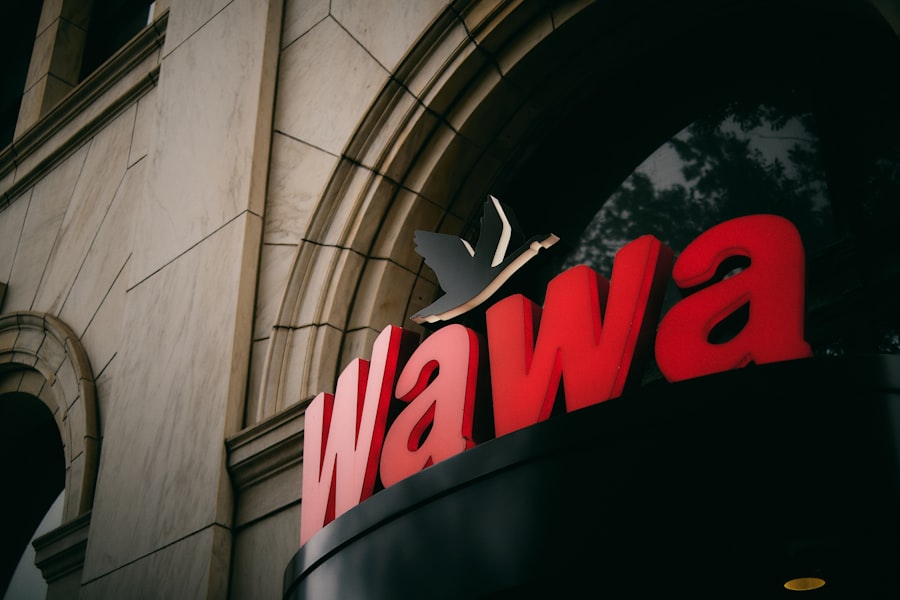Walmart stands as a towering figure in the landscape of American retail, a behemoth that has reshaped the way consumers shop and how businesses operate. Founded in 1962 by Sam Walton, the company has grown from a single discount store in Rogers, Arkansas, to a global retail powerhouse with thousands of locations across the United States and around the world. Its influence extends beyond mere sales figures; Walmart has become synonymous with low prices and convenience, fundamentally altering consumer expectations and behaviors.
The company’s ability to adapt to changing market conditions and consumer preferences has solidified its position as a leader in the retail sector. The sheer scale of Walmart’s operations is staggering. With over 4,700 stores in the U.S.
alone, it employs more than 1.5 million people, making it one of the largest employers in the country.
As Walmart continues to evolve, its impact on American retail remains a topic of significant discussion and analysis, raising questions about sustainability, competition, and the future of shopping in an increasingly digital world.
Key Takeaways
- Walmart is a dominant force in American retail, with a significant impact on various aspects of the industry.
- The rise of Walmart as a retail giant has transformed the landscape of American retail, leading to changes in consumer behavior and competition.
- Walmart’s effect on small businesses and local retailers has been significant, leading to closures and changes in the way communities shop.
- Walmart’s supply chain and employment practices have had a major impact on American manufacturing and the labor market.
- Walmart’s expansion into e-commerce has further solidified its influence on the retail industry, shaping the future of American retail.
The Rise of Walmart as a Retail Giant
Walmart’s ascent to retail supremacy can be traced back to its innovative business model and strategic vision. Sam Walton’s philosophy centered on providing customers with low prices and great value, a principle that resonated deeply with American consumers. By leveraging economies of scale, Walmart was able to negotiate lower prices from suppliers, passing those savings on to customers.
This approach not only attracted a loyal customer base but also set a new standard for pricing in the retail industry. The company’s expansion strategy played a crucial role in its rise. Walmart began by establishing stores in small towns and rural areas, where competition was minimal.
This allowed the company to capture market share in regions that larger retailers often overlooked. As Walmart grew, it diversified its product offerings, moving beyond groceries to include electronics, clothing, and household goods. This diversification not only increased sales but also solidified Walmart’s reputation as a one-stop shopping destination, further entrenching its dominance in the retail landscape.
Walmart’s Effect on Small Businesses and Local Retailers

The impact of Walmart’s growth on small businesses and local retailers has been profound and often contentious. Many small retailers have struggled to compete with Walmart’s low prices and extensive product selection. As Walmart enters new markets, it frequently leads to the closure of local shops that cannot match its pricing power or inventory breadth.
This phenomenon has sparked debates about the long-term viability of small businesses in communities where Walmart operates. However, the effects are not uniformly negative. Some small businesses have found ways to coexist with Walmart by carving out niche markets or focusing on personalized customer service that larger retailers cannot replicate.
Additionally, Walmart’s presence can stimulate local economies by creating jobs and increasing foot traffic in surrounding areas. Nevertheless, the overall trend suggests that many small retailers face significant challenges in an environment dominated by such a powerful entity.
The Influence of Walmart on Consumer Behavior
| Metrics | Data |
|---|---|
| Number of Walmart stores worldwide | 11,443 |
| Annual revenue of Walmart | 559.15 billion |
| Percentage of U.S. population shopping at Walmart each week | 90% |
| Percentage of Walmart shoppers who are influenced by in-store promotions | 70% |
| Percentage of consumers who consider Walmart as their primary shopping destination | 40% |
Walmart’s influence extends deeply into consumer behavior, shaping how people shop and what they expect from retailers. The company’s commitment to low prices has conditioned consumers to prioritize cost over other factors such as quality or brand loyalty. This shift has led to a more price-sensitive shopping culture, where consumers are constantly seeking the best deals and discounts.
Moreover, Walmart’s extensive marketing strategies have played a pivotal role in shaping consumer perceptions. The retailer’s advertising campaigns often emphasize savings and value, reinforcing the idea that shopping at Walmart is synonymous with smart spending. As a result, consumers have come to associate low prices with quality service and convenience, further entrenching Walmart’s position as a preferred shopping destination.
Walmart’s Supply Chain and its Impact on American Manufacturing
Walmart’s supply chain is often hailed as one of the most efficient in the world, characterized by its use of advanced technology and logistics management. The company’s ability to streamline operations has allowed it to maintain low prices while ensuring product availability across its vast network of stores. However, this efficiency comes at a cost, particularly for American manufacturing.
As Walmart seeks to minimize costs, it has increasingly turned to overseas suppliers for many of its products. This shift has raised concerns about the decline of American manufacturing jobs as companies move production abroad to meet Walmart’s demands for lower prices. While this strategy has enabled Walmart to offer competitive pricing, it has also contributed to job losses in certain sectors and sparked discussions about the long-term implications for the U.S.
economy.
Walmart’s Employment Practices and Labor Market Impact

Walmart’s employment practices have been a focal point of scrutiny and debate over the years. As one of the largest employers in the United States, the company has faced criticism for its wage policies and working conditions. Many employees have reported low wages and limited benefits, leading to calls for better treatment and fair compensation within the retail sector.
Despite these criticisms, Walmart has made efforts to improve its employment practices in recent years. The company has raised its minimum wage and introduced initiatives aimed at enhancing employee training and development opportunities. However, challenges remain as workers continue to advocate for better pay and working conditions.
The broader implications of Walmart’s employment practices extend beyond its own workforce; they set benchmarks for labor standards across the retail industry, influencing how other companies approach employee compensation and benefits.
The Environmental Impact of Walmart’s Operations
Walmart’s operations have significant environmental implications that warrant careful consideration. As a major retailer with a vast supply chain, the company’s practices contribute to various environmental challenges, including carbon emissions, waste generation, and resource depletion. Critics argue that Walmart’s focus on low prices often comes at the expense of sustainable practices.
In response to growing concerns about environmental sustainability, Walmart has initiated several programs aimed at reducing its ecological footprint. The company has committed to sourcing renewable energy, reducing greenhouse gas emissions, and minimizing waste through recycling initiatives. While these efforts represent positive steps toward sustainability, questions remain about their effectiveness and whether they can offset the environmental impact of such a large-scale operation.
Walmart’s Role in Shaping American Communities
Walmart’s presence in communities across America has had both positive and negative effects on local dynamics. On one hand, the company provides access to affordable goods and creates jobs that can stimulate local economies. Many communities benefit from the convenience of having a large retailer nearby, which can enhance residents’ quality of life by offering essential products at competitive prices.
Conversely, there are concerns about the social fabric of communities where Walmart operates. The arrival of a supercenter can lead to the decline of local businesses and alter community dynamics as shopping habits shift toward larger retailers. Additionally, some argue that Walmart’s corporate culture prioritizes profits over community engagement, leading to a lack of investment in local initiatives or support for community development projects.
This duality highlights the complex role that Walmart plays in shaping American communities.
Walmart’s Influence on Pricing and Competition in the Retail Industry
Walmart’s pricing strategies have had a profound impact on competition within the retail industry. By consistently offering low prices, Walmart sets a benchmark that other retailers must strive to meet or exceed. This pressure can lead to price wars among competitors, ultimately benefiting consumers through lower prices but potentially harming smaller retailers who cannot sustain such aggressive pricing strategies.
The ripple effect of Walmart’s pricing power extends beyond direct competitors; it influences suppliers as well. Many manufacturers feel compelled to lower their prices or improve their efficiency to maintain their contracts with Walmart. This dynamic can create a race to the bottom in terms of pricing and quality standards across the industry, raising concerns about long-term sustainability for both retailers and suppliers.
Walmart’s Expansion into E-commerce and its Effect on Online Retail
In recent years, Walmart has made significant strides in expanding its e-commerce presence, recognizing the growing importance of online shopping in today’s retail landscape. The company’s investment in digital platforms and technology reflects an understanding that consumer preferences are shifting toward convenience and accessibility. By enhancing its online offerings, Walmart aims to compete with e-commerce giants like Amazon while retaining its loyal customer base.
This expansion into e-commerce has had far-reaching implications for the retail industry as a whole. As Walmart embraces online shopping, traditional brick-and-mortar retailers are forced to adapt their strategies or risk losing market share. The competition between online and physical stores is intensifying, prompting many retailers to invest in omnichannel strategies that integrate both shopping experiences seamlessly.
The Future of Walmart and its Continuing Impact on American Retail
Looking ahead, Walmart’s future remains intertwined with the evolution of American retail. As consumer preferences continue to shift toward online shopping and sustainability becomes increasingly important, Walmart faces both challenges and opportunities. The company’s ability to innovate and adapt will be crucial in maintaining its dominance in an ever-changing market landscape.
Walmart’s ongoing commitment to low prices will likely remain a cornerstone of its strategy; however, balancing affordability with sustainability will be essential for long-term success. As consumers become more conscious of environmental issues and social responsibility, Walmart may need to further enhance its efforts toward sustainable practices while continuing to provide value-driven options for shoppers. In conclusion, Walmart’s influence on American retail is undeniable and multifaceted.
From shaping consumer behavior to impacting small businesses and local economies, its presence reverberates throughout various aspects of society. As it navigates the complexities of modern retailing—balancing profitability with social responsibility—Walmart will continue to play a pivotal role in defining the future landscape of American commerce.
Walmart’s transformation of American retail is a fascinating topic that highlights the company’s innovative strategies and their impact on consumer behavior. For a deeper understanding of this phenomenon, you can explore a related article that delves into the various ways Walmart has reshaped the retail landscape. Check it out here: Walmart’s Influence on American Retail.
WATCH THIS! How Walmart KILLED The American Town
FAQs
What is Walmart’s impact on American retail?
Walmart has had a significant impact on American retail by revolutionizing the industry with its low prices, large selection of products, and expansive reach across the country. It has also influenced other retailers to adopt similar strategies to remain competitive.
How has Walmart changed the way Americans shop?
Walmart has changed the way Americans shop by offering a one-stop shopping experience for a wide range of products at affordable prices. Its presence in both urban and rural areas has made shopping more convenient for many Americans.
What are some criticisms of Walmart’s impact on American retail?
Critics argue that Walmart’s expansion has led to the closure of small businesses, the exploitation of workers, and the homogenization of products in the retail industry. Additionally, some have raised concerns about its environmental impact and labor practices.
How has Walmart influenced the supply chain and distribution in American retail?
Walmart’s emphasis on efficiency and cost-effectiveness has influenced the supply chain and distribution in American retail. It has pushed suppliers to streamline their operations and reduce costs in order to meet Walmart’s demands, leading to changes in how products are sourced, manufactured, and distributed.
What are some of the key strategies Walmart has used to change American retail?
Walmart has employed strategies such as everyday low prices, a wide assortment of products, a strong focus on logistics and supply chain management, and the use of technology to optimize its operations. These strategies have helped Walmart become a dominant force in American retail.
